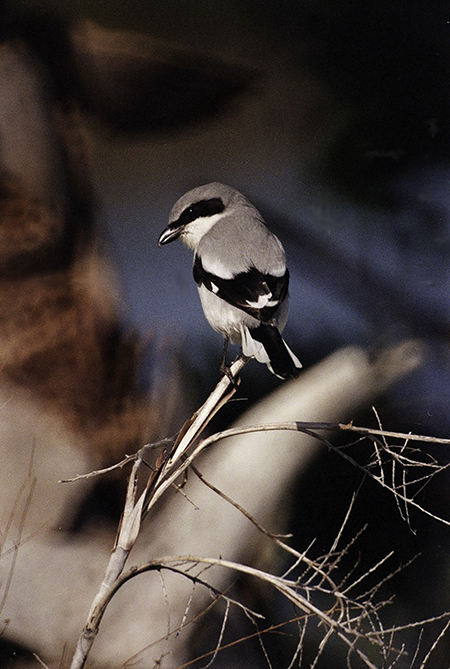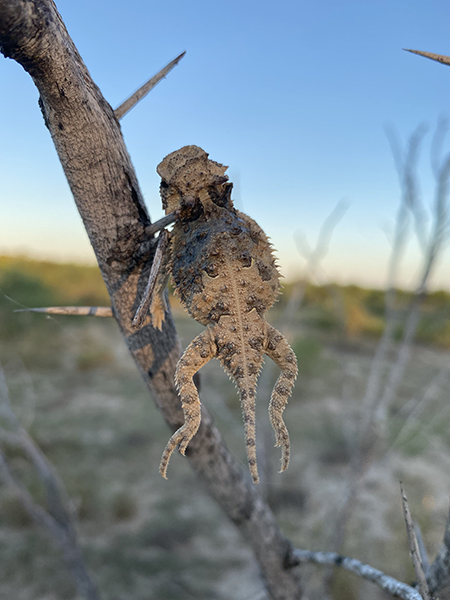
THE LOGGERHEAD SHRIKE (pictured) is a small bird about the size of a robin. It is also known as the “Butcherbird” due to its habit of impaling its prey on sharp pointed things like fence barbs and thorns until they are dead before eating them. They are in parts of Texas from September-April. (Photo courtesy of Kennedy Space Center)
by John Jefferson
Raise your hand if you know what a loggerhead shrike is?
Here’s a clue: it has nothing to do with men who cut down trees for a living and make shrill noises while doing so.
If you think it’s a small predatory bird, I’m impressed. If you have ever seen one, I’m even more awestruck!
Some may know it as the “Butcherbird.” That’s because it has the ruthless habit of impaling its captured prey on anything sharp that will hold it until suppertime for the robin-sized bird. I don’t think anyone knows for sure — and the birds sure aren’t talking – but I’ll venture a guess that maybe these birds like well-cooked dinners. They winter in Texas from September – April, and you know how hot it gets some of that time. If the sun and heat can fry eggs on the sidewalk, they could surely roast a roach on the rusty barb of a hot “bobwire” fence.
The website WWW.allaboutbirds.com suggests they let prey age to destroy toxins. And some of its catches are too big for the small bird to kill. Impaling does it for them. But I like my reason above better.
Shrikes breed in the eastern half, but range throughout Texas from the upper coast (near Beeville) on up and out to the Trans-Pecos, the Llano Estacado, and the Panhandle according to Peterson’s “Field Guide to the Birds of Texas.” It even says we have them around here in Austin.
Their hooked-tipped bills are designed hawk-like and enable them to attack and disable prey from insects, lizards, and mice to small birds. Especially grasshoppers. Since Horny Toads are more properly known as Texas horned lizards, they are in jeopardy, too. From their mock-ferocious, horn-headed countenance, and coarse, tough, and scaly hide, I’d have never considered them anybody’s food source.
But after last week’s column on the horny little guys, I got an interesting call from Marty Bludau in Hallettsville. He said his brother, Richard, had photographed a horny toad impaled on a mesquite thorn near Catarina. That’s in South Texas near the border. He offered me the pictures if I wanted them.
And THAT I had to see! As I wrote last week, lots of species prey on Horny Toads. But I wouldn’t have expected a bird smaller than a robin to be one of them. But seeing the attached image of one skewered onto a sharp mesquite thorn, I must believe it was the work of the Butcherbird. It’s like when the Chicago cops asked Bugs Moran who he thought machine gunned seven of his gang members. He is said to reply that nobody but Al Capone kills like that. Same goes for butcherbirds and impaling.

EVEN THE REVERED TEXAS HORNED LIZARD, also known as “Horny Toads,” can fall prey to butcherbirds as this one impaled on a mesquite thorn probably indicates. A butcherbird was the prime suspect in this event. Photo by Richard Bludau near Catarina, Texas
They’re related to crows and ravens, although prettier. But the hawk-like beak, evil look in their eyes, and the black mask give them a sinister appearance.
The name “shrike” comes from the Old English word “shriek,” which refers to their raucous call.
JJ




